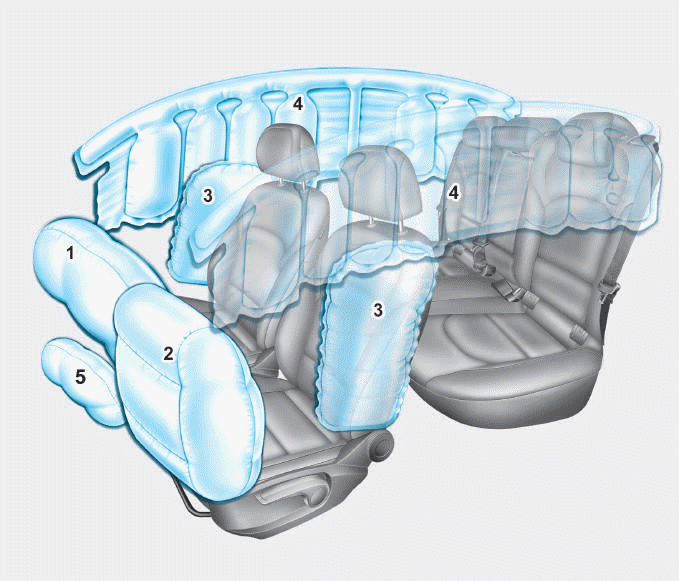Hyundai i-30: Cylinder Block / Cylinder Block
Hyundai i30 (PD) 2018-2025 Service Manual / Engine Mechanical System / Cylinder Block / Cylinder Block
Repair procedures
| Disassembly |
|
|
| 1. |
Remove the engine assembly from the vehicle.
(Refer to Engine and Transaxle Assembly - "Engine and Transaxle Assembly")
|
| 2. |
Remove the transaxle assembly from the engine assembly.
(Refer to Double Clutch Transmission (DCT) System - "Double Clutch Transmission
(DCT)")
|
| 3. |
Remove the flywheel.
(Refer to Cylinder Block - "Flywheel")
|
| 4. |
Remove the rear oil seal.
(Refer to Cylinder Block - "Rear Oil Seal")
|
| 5. |
Install the engine to engine stand for disassembly.
|
| 6. |
Remove the timing chain.
(Refer to Timing System - "Timing Chain")
|
| 7. |
Remove the intake manifold.
(Refer to Intake and Exhaust System - "Intake Manifold")
|
| 8. |
Remove the exhaust manifold.
(Refer to Intake and Exhaust System - "Exhayst Manifold")
|
| 9. |
Remove the cylinder head assembly.
(Refer to Cylinder Head Assembly - "Cylinder Head")
|
| 10. |
Remove the A/C compressor.
(Refer to Heating, Ventilation Air conditioning - "Compressor")
|
| 11. |
Remove the inlet fitting.
(Refer to Cooling System - "Inlet Fitting")
|
| 12. |
Remove the knock sensor.
(Refer to Engine Control / Fuel System - "Knock Sensor")
|
| 13. |
Remove the oil pump.
(Refer to Lubrication System - "Oil Pump")
|
| 14. |
Remove the ladder frame (A).
Insert the blade of SST (09215-3C000) between the cylinder block and
the ladder frame and cut out applied sealer. Then, remove the ladder
frame.
|
| 15. |
Remove the piston and connecting rod assemblies.
(Refer to Cylinder Block - "Piston and Connecting Rod")
|
| 16. |
Remove the crankshaft.
(Refer to Cylinder Block - "Crankshaft")
|
| 17. |
Remove the water jacket seperator.
(Refer to Cylinder Block - "Water Jacket Seperator")
|
| 18. |
Remove the piston cooling jet (A).
|
| Inspection |
Cylinder Block
| 1. |
Remove the gasket material.
Using a gasket scraper, remove all the gasket material from the top
surface of the cylinder block.
|
| 2. |
Clean the cylinder block.
Using a soft brush and solvent, thoroughly clean the cylinder block.
|
| 3. |
Inspect the top surface of the cylinder block for flatness.
Using a precision straight edge and feeler gauge, measure the surface
contacting the cylinder head gasket for warpage.
|
| 4. |
Inspect the cylinder bore.
Visually check the cylinder for vertical scratchs.
If deep scratchs are present, replace the cylinder block.
|
| 5. |
Inspect the cylinder bore diameter.
Using a cylinder bore gauge, measure the cylinder bore diameter at position
in the thrust and axial direction.
|
| 6. |
Check the cylinder bore size code on the cylinder block.
Discrimination of cylinder bore size
|
| Reassembly |
|
| 1. |
Install the piston cooling jet (A).
|
| 2. |
Install the water jacket seperator.
(Refer to Cylinder Block - "Water Jacket Seperator")
|
| 3. |
Install the crankshaft.
(Refer to Cylinder Block - "Crankshaft")
|
| 4. |
Install the piston and connecting rod assemblies.
(Refer to Cylinder Block - "Piston and Connecting Rod")
|
| 5. |
Install the ladder frame
|
| 6. |
Assemble the other parts in the reverse order of disassembly.
|
 Crankshaft
Crankshaft
Components and components location
Components
1. Thrust bearing
2. Upper main bearing
3. Crankshaft
4. Lower main
bearing
5...
Other information:
Hyundai i30 (PD) 2018-2025 Service Manual: Steering Column Shroud Panel
Components and components location Component Location 1. Steering column shroud lower panel 2. Steering column shroud upper panel Repair procedures Replacement [Steering column shroud upper panel] • Put on gloves to prevent hand injuries...
Hyundai i30 (PD) 2018-2025 Service Manual: MDPS Control Unit
Repair procedures Replacement • If a DTC occurs in the ECU, check the connectors and wiring. If no problem is found, replace the ECU...
Categories
- Manuals Home
- 3rd Generation i30 Owners Manual
- 3rd Generation i30 Service Manual
- To activate the ISG system
- Shift-lock system. Shift-lock release
- Front windscreen wiper service position
- New on site
- Most important about car
Air bag - supplemental restraint system

1. Driver’s front air bag
2. Passenger’s front air bag
3. Side air bag*
4. Curtain air bag*
5. Knee air bag*
6. Front passenger air bag ON/OFF
switch
Copyright © 2025 www.hi30.net












